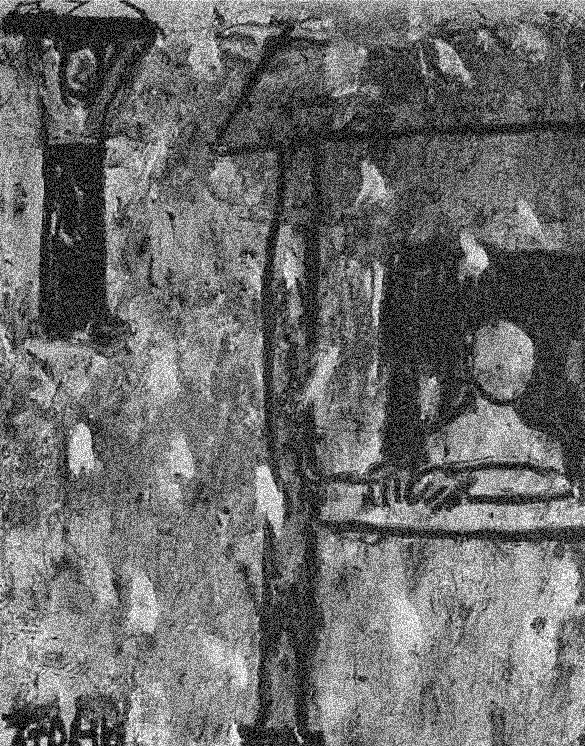The Digital Claustrum
Our contemporary social media ecosystem is both the product of and the producer of the accelerating destruction of social bonds.

My sophisticated, independent 17-year-old laments feeling fake. Beyond curated presentations, she wonders who she really is; her multiple, largely digital selves feel phony, shallow, dissonant, and subject to multiple interpretations. Although she receives feedback 24-7, it’s hard for her to trust her relationships. Like many of her peers, she obsesses over digitized interactions and often feels lonely despite hyper-connectivity. If one can tolerate the book’s scatology and errant body parts, Donald Meltzer’s The Claustrum sheds light on my daughter’s experience. It illuminates the ways in which our contemporary social media ecosystem damages subjects and relationships.
The past forty years have witnessed an accelerating destruction of social bonds and a dissolution of many organizations that previously buttressed the individual against brute competition and survival. Under these conditions, social media networks fill the gaps. Individuals desperately seek to support themselves through whatever means available, increasingly including private digital relational “networks,” which only exacerbate feelings of alienation. As Wolfgang Streeck writes, “person-centered relation-making creates lateral social structures that are voluntary and contract-like, which makes them flexible but perishable, requiring continuous networking to keep them together and adjust them on a current basis to changing circumstances. An ideal tool for this are the new social media that produce social structures for individuals, substituting voluntary for obligatory forms of social relations, and networks of users for communities of citizens.”
In broad terms, The Claustrum provides a psychological counterpart to this social process. Meltzer gives a gritty, in-depth tour of the primitive, undifferentiated, paranoid-schizoid experience social media palliates and engenders. Like Melanie Klein, whose psychoanalytic theory attempted to uncover the most primitive mechanisms of relating which eventually constitute the self, Meltzer believes this mode of relating is a phase in normal development, and a place everybody can regress to in moments of distress. Some people (often diagnosed as borderline) get stuck, however, due to parental failures and/or constitutional factors. For example, if an infant is excessively intolerant of separation, this might disrupt processes of individuation. On the other hand, if parents possess scant capacity for reverie, or cannot tolerate a baby’s distress, infants may fail to develop a secure sense of self and other, and a capacity for genuine dialogue. Environmental failings, such as persistent threats to survival, exploitive institutional control, and lack of boundaries, limits, and containment, can also precipitate a return to “Claustral” relating, wherein a person goes about their daily life as if they are always inside a particular object, relating to the outside world accordingly.
The phrase “the Claustrum” conveys an experience of inescapability. It is a world that lacks the mediating influence of protective, psychic skins. In the absence of boundaries, one cannot escape to the outside, because there’s no outside to escape to; neither can one retreat to the privacy of self, because there is no separate, stable inside, either. Although pseudo-maturity and pseudo-autonomy often masquerade as the real thing, the experience Meltzer describes is a diffuse, claustrophobic, paranoid, and primitive world of projection and power plays, part-objects, and lack of objects entirely. At once omnipotent and powerless, the fragile, undifferentiated pseudo-self has no whole object or durable, external other to rely on, and is prone to devastating narcissistic injury and psychic collapse. A sense of fraudulence develops: the shallow, undifferentiated self feels like an impostor and an interloper. Ostentatious displays of individuality cover a nagging, vague sense of depersonalization and hollowness.
Social media-mediated relationships represent the Claustrum’s primitive world of projection and part-objects in concrete terms. In digital social communities, there is no outside, and no real inside, either. Although followed obsessively, projected on, and cathected to, the digital other does not exist in durable, material terms. A virtual relationship can disappear with a click, making the virtual other at best a part-object, and at worst a mere screen for hyperbolic projection. There is no autonomous self in the social media landscape. The self exists only in a constructed, experimental milieu, owned and operated by powerful corporations. Though in some sense quite alone, the digital pseudo-individual has no privacy, no interior to which to retreat, and often reports feeling fake—a voyeuristic imposter at once puissant and inert. Like Meltzer’s Claustral dweller, the social media resident often feels omnipotent, but is ultimately powerless and intensely vulnerable to narcissistic injury.
In clinical settings, individuals often report feeling devastated or elated based on the number of likes or other digital responses they receive. Even when aware that this response is the result of timing, algorithms, and groupthink, the rejection still stings. Effort redoubles to construct an image worthy of approval from an other at once nonexistent and inescapable, and incapable of delivering the durable, loving, nuanced attunement we need to grow.
The social consequences of Claustral living are manifold. There can be no genuine dialogue in the absence of an authentic self or other. Flimsy, reactive selves exchange slogans and projections with part-objects, but this should not be confused with dialogue. True dialogue involves relating to the other as a whole object—it involves seeing and respecting the other as a separate self with a separate mind. It also involves thinking in complex and difficult ways. It requires the capacity to wrestle with challenging and contradictory concepts, modify one’s ideas based on the other’s voice, and tolerate differences of opinion. In other words, discourse, like democracy, involves autonomy, recognition of difference, and willingness to surrender to a process bigger than oneself. This, on all three counts, is impossible for the fragile, persecuted Claustral self.
Communication on social media exemplifies both this lack of dialogue and the dual substitutes of mindless, insular affirmation and inflammatory, defensive sloganeering. On one hand, encounters with difference in digital communities can be avoided easily; participation in social media becomes an insulated echo chamber, where ideas repeat without generating thought. Without a real, external other with whom to share challenging dialogue, opinions go unquestioned, and fake news proliferates. A pseudo-self who cannot really think is alarmingly prone to deception. On the other hand, in the absence of embodied, whole-object relationships, the exchange of differing opinions fails to amount to genuine dialogue. One-dimensional caricatures and projections substitute for mutual recognition. Hostile critique supplants dialogic exchange. A pseudo-self who cannot really think is alarmingly prone to the deception that he can. In the confusing, precarious digital Claustrum, fragile, threatened selves cling rigidly to established views, unwilling to so much as entertain the idea that the other’s perspective might change one’s mind.
Hostility towards the other is not unfounded, as exploitation is the Claustral M.O. Absent mutual recognition and genuine dialogue, paranoia, misrecognition, and doer-done to binds govern relating. Trapped in a manipulative, damaging environment, Claustral residents’ only choice is between doer or done to positions. Participants can shout or whine about their victimization, or align with “the great fecal penis” and engage sadistically with others, but there is no other alternative, no third position of mutual benefit. With no outside to escape to, and no privacy from which to build meaningful resistance, residents may become enraged at their exploitation, but feel they have no other option.
The world of social media is similarly exploitative: the mega-companies that control the internet extract countless hours of free labor, use personal information for profit, and manipulate public sentiment. Social media platforms like Facebook constitute the largest, most invasive surveillance network in human history, and the information gleaned is used to rob participants of attention and money. Though increasingly aware of their exploitation, participants feel that there is no alternative: life without social media has become unthinkable. It is as if the world has literally become a giant tweeting, sloganeering morass to the digital Claustral dwellers: they have lost their connection to outside reality. Thus, despite feeling intruded upon, manipulated, and exploited, they consign themselves to a powerful, seductive, and ultimately malignant object. They protest, deny, reframe, and intellectualize, but remain trapped in the digital Claustrum.
What is to be done about this state of affairs? Meltzer warns the analyst that work with this kind of patient is difficult; perhaps the most important thing is to let it be known 1) that the analyst recognizes that the patient is living in a Claustrum 2) that the analyst can visit the Claustrum, and can also leave. This demonstrates that the Claustrum can be exited: that there are alternatives to Claustral dwelling. This, of course, is only a beginning. Yet it highlights the importance of articulating and demonstrating that there are in fact alternatives to technology-mediated life. Meltzer’s work suggests that one of the most important means of resistance to the contemporary digital Claustrum is to contradict the assertion that it is inescapable—a necessary evil to which we must ascribe—and to uphold alternative visions.
■
Amber Trotter phobically avoids the digital Claustrum, worried that if she enters she will never emerge.



